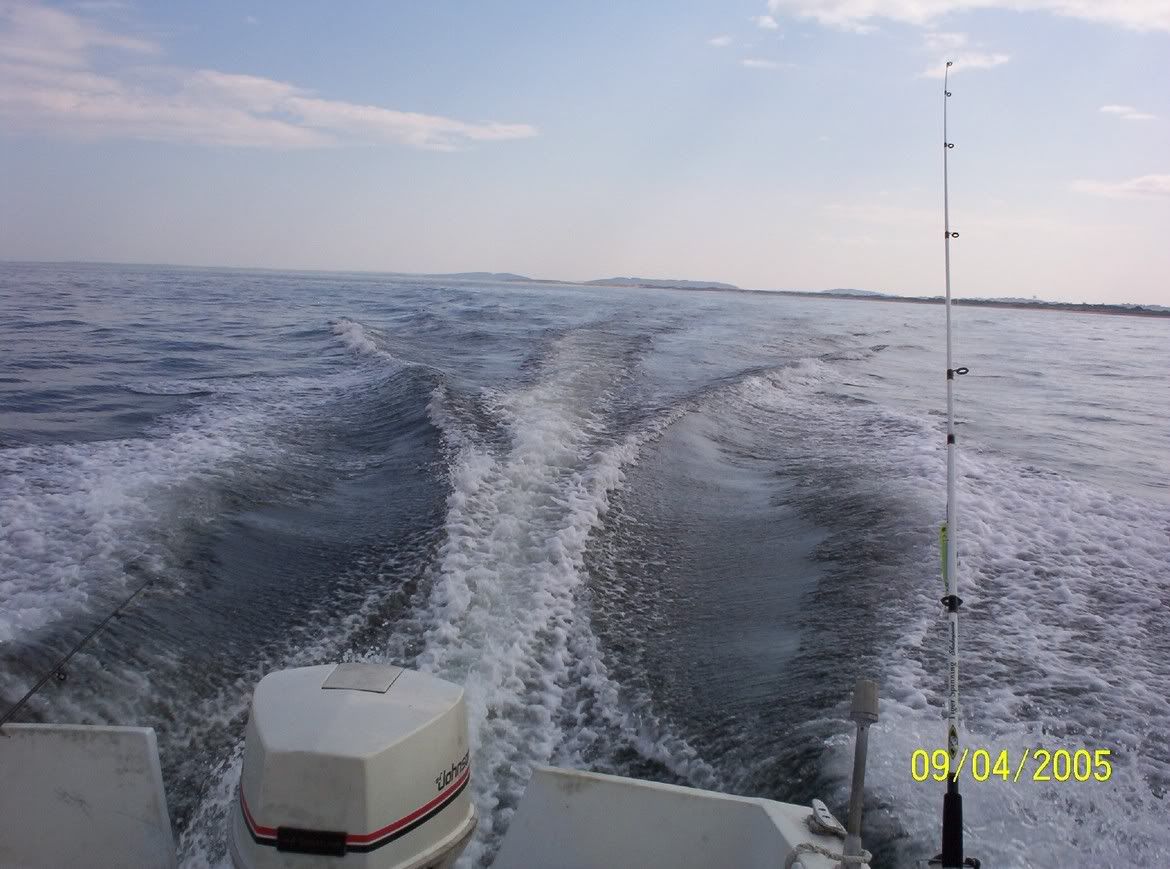Well, she's been out in the big water a couple times, now, after the initial splash in the little mill pond - as a matter of fact last weekend we were rockin thru some nice 2 - 4's (hah NOAA phhht) and now I know what everyone talks about in the Sea Craft ride -
This boat can flat out Do It !!!
and I've now had the pleasure of seeing my son catch his first striper - he's an avid fisherman, and he was psyched beyond belief. This whole exercise was worth it !!!

On the job as a whole - as others have said, it is awful easy to under-estimate the work involved, and the time it will take, for the non=pro, to do this.
It appears the inside / outside discussion will continue forever - IMHO there is no "one" correct way - it varies with the boat, the design, and the condition - the difficulty being, for the layman, that you won't truly know the condition until after you cut it open and get inside. I think, at least on a sea craft, that if you -only- build it back to stock, that you're probably better doing it from the inside - but I would strongly recommend the addition of one or more knees. I grant that the prospect of cutting a piece of the cap off is probably enough to scare most off, or lead to doing it from the outside - again, I think that either can be equally strong.
To put on my engineering hat again, for a moment, this boat lasted 32 years as built, which was probably well past it's intended design life. But in my fix, I wanted to get more than just another 5 years or so out of her - that would have just been an aluminum plate, a weekend work, and back in the water.
also the question on epoxy vs polyester resin - again, knowing that many pro's do just use the polyester, or vinylester if that's the original hull material. All the resins have two distinct properties, primary cure strength, and secondary cure strength - the primary occurring in the original layup, and secondary being what we face when we go back, years later, to reglass something.
Numbers I've seen suggest that secondary cure strentgh of a patch over a crack, only yields around 80% of the original item strength, and also that epoxy is significantly stronger than polyester in this application.
So where I'm going in this long ramble, is what my thoughts were, which I must state are specific to this boat / design, the 20' Seafari, which had a transom, and an inner cap as a supporting structure to the transom, with low stringer heigth, and no knees.
Let me give the transom, as built, a strength value of 1, and the same for the inner cap -
so we have transom = 1 + cap = 1, as built stregth value of 2
now with a soaked transom core reduce that to .5, and with a serious crack in the inner cap, reduce that to .7, and now we're at .5 + .7 = 1.2 ... a serious strength reduction.
Now go back to the secondary cure strength topic, and at best, repaired, we are only going to get .8 ... an improvement, but not able to return to the full as built strength, if repaired as built. (.8 + .8 = 1.6).
So now lets add additional reinforcing structure - in my case the knee, and redoing the inner cap, transom connection, and because this is secondarily bonded to the hull, I will only give it a .8,
but now we have (repaired transom + repaired inner cap + added support) .8 + .8 + .8 = 2.4 ... which is now better / stronger, than the as built configuration.
I can also see why many pros do use the polyester, and do it from the inside - as both will save some time - polyester from it's much faster cure time, which would not be a drawback to the pro, used to working with it and doing this stuff, and from the inside saving that miserable job of fairing the outer skin smooth - and obviously, being more cosmetically appealing to the paying customer. Time is money - but given the nature of resins and secondary bond strength, I don't think I can agree that putting it back just the way it was made, will yield as strong as when it was originally made.... but still better than that aluminum plate.
I was out in some stuff, last weekend, 2 - 4's with quite a few 6's thrown in, and the boat is as stiff and responsive as you could want - and now I finally know what you guys, and others that had input to my buying this thing, have been saying....
the Sea Craft ride is truly phenominal. At one point I pushed it up to about 24 mph, cruising home at the end of the day, slamming, no, knifing thru this stuff at a rate none of my previous boats could have done without slapping and shuddering... but this boat can do it, and likes it - smooth and soft. Truly Impressive.
So if you see a red Sea Craft Seafari out off the NH / Mass coast, stop by and say hello.
Bill
